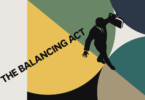I am a dinosaur — the kind who likes paper. All right, I’m grateful for the speed, ease and access that the digital age has brought (even though I hyperventilated when I had to kiss my IBM Selectric goodbye for a computer). I like my computer and enjoy the portability and access of my BlackBerry. But, even though technology has its benefits and my brain works hard to adjust to all the technological changes, especially as they affect the public relations profession, my heart belongs to the last century.
I love real newsPAPERS. I love going out to my driveway to pick up the oblong blue plastic bag that contains my New York Times. I love opening my paper and spreading out each section while sitting at the breakfast table with a cup of coffee. (The newspaper doesn’t crash if I spill coffee on it.) I love doing a quick scan of the cover page, seeing what’s above and below the fold, and reading left and right pages. I love being able to do the crossword puzzle on the spot. And, although I certainly appreciate the ease with which I can get newspaper articles online to read, to share with friends, or to archive for teaching, I just don’t get the same happiness quotient that I get from the real McCoy.
I’m also passionate about paper books. I love the different feel and weight of each book, the different type face, the cover art, and all the aspects that give each book its individuality and character. Collectively, the whole is greater than the sum of the parts. I get such pleasure from perusing my library, which gives me a meaningful timeline of my literary tastes — like Proust’s madeleine multiplied.
Paper makes me happy. And that is why I shook my head in despair when I read on TechCrunch that, at this August’s Techonomy conference at Lake Tahoe, digital guru Nicholas Negroponte predicted that paper books will be dead in 5 years. Of course, this doesn’t mean that all the paper books will disappear from the face of the earth (well, not immediately anyway), but the digital writing is on the electronic wall.
Perhaps even more telling is that e-books sold for the Amazon Kindle are now outpacing the hardcover books Amazon sells (partly attributable to Kindle’s retail price cut last quarter).
Another sign of the unhealthiness of the book industry is the speculation that the Barnes and Noble bookstore chain is on the sales block. The Carousel of Progress is turning, making paper books relics.
As I ponder the fate of newspapers and paper books, I can’t help but consider the direction of the public relations profession with the onslaught of digital and social media platforms. No longer can one practice public relations without considering strategic ways to engage audiences through Facebook, LinkedIn, Twitter and YouTube (and that’s just for starters). I appreciate the value of engaging audiences and stakeholders as part of the digital community where people increasingly live, work and play. You have to go where the people are to build brand, connect with fans and address detractors.
But I can’t help thinking that the immediacy and breadth of digital connections are not a substitute for the personal and in-person connections, which for me are some of the most enjoyable parts of being a professor and a public relations practitioner. And while we have more options, we may be losing our deeper social connections in the process.
In the classroom, I am a “talk and chalk” professor. I enjoy seeing students’ faces, hearing their voices and getting a sense of where their thoughts are during a lecture or discussion. I enjoy the informal connection after class. So while I do appreciate the benefits of online teaching and all the access it offers, I relish the Personal Relations aspects of public relations that I feel may be getting lost in the shuffle.
The good news is that there are so many new channels to connect to our audiences, but the digital clutter and the millions of voices make it harder to figure out the best way to get our message across. And while measuring clicks and monitoring Facebook fans can give insights into which messages target audiences respond to, empathy that comes from personal engagement seems to be decreasing as a factor in our interactions.
When new students come to my office for the first time to talk about their interest in the public relations major, I try to find out why they’re interested in our profession. When they tell me they are “people persons,” I always smile at their simplistic view of public relations. But recently, I have begun to appreciate the purity of response. I am a people person, as I am a paper person. And as we go digital, I am increasingly missing the people connections as I worry about missing the paper.
I’ll continue to try to embrace the digital world and all the changes. But, I miss the personal aspect of our business. Now, I have to excuse myself. I need to sit down for a while with my favorite dog-eared book. See you in the tar pit.
Lynn D. Appelbaum, APR, Fellow PRSA, is a member of the PRSA Board of Directors and associate professor and advertising & public relations program director at the City College of New York.






